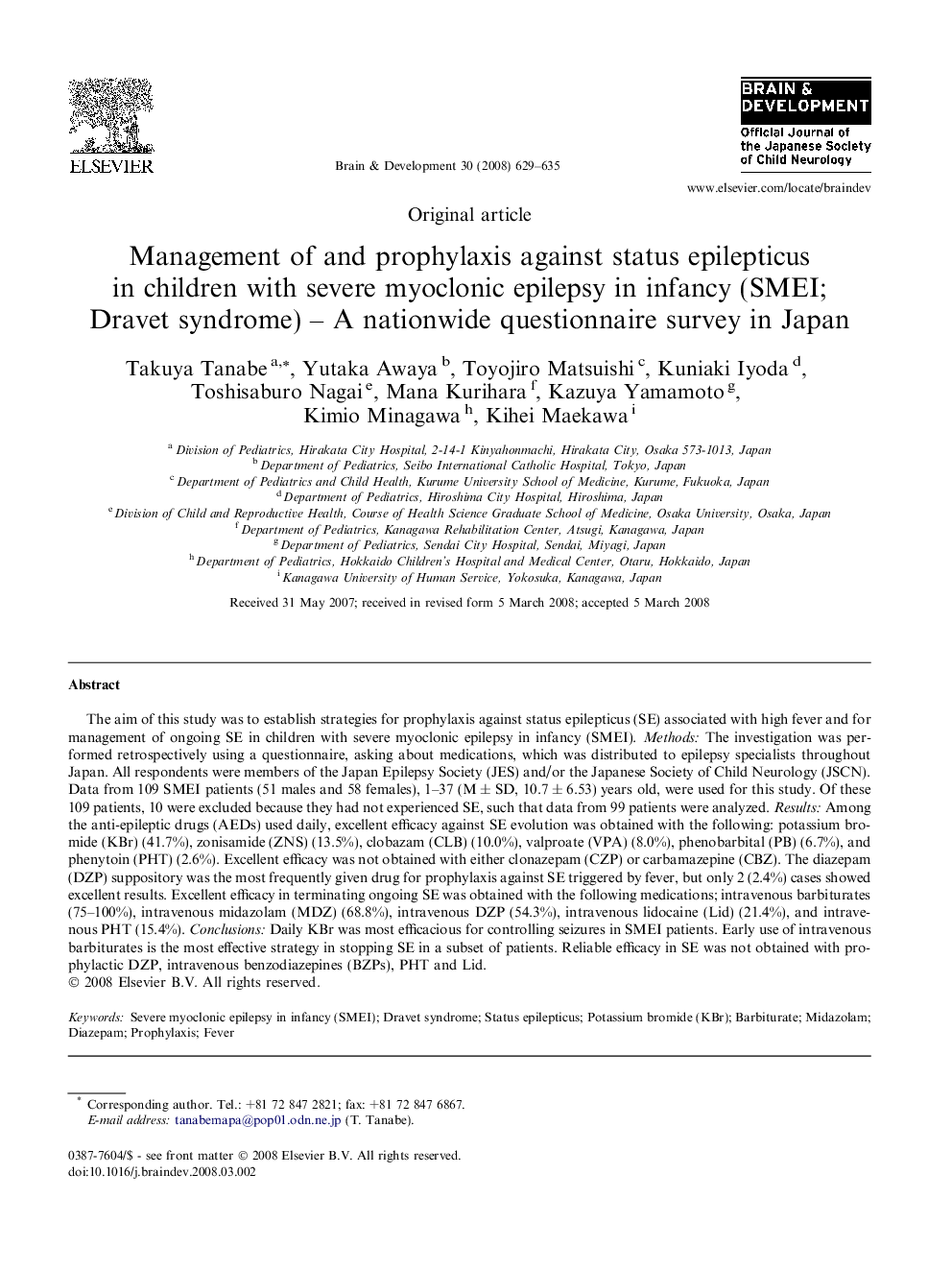| کد مقاله | کد نشریه | سال انتشار | مقاله انگلیسی | نسخه تمام متن |
|---|---|---|---|---|
| 3038399 | 1579640 | 2008 | 7 صفحه PDF | دانلود رایگان |

The aim of this study was to establish strategies for prophylaxis against status epilepticus (SE) associated with high fever and for management of ongoing SE in children with severe myoclonic epilepsy in infancy (SMEI). Methods: The investigation was performed retrospectively using a questionnaire, asking about medications, which was distributed to epilepsy specialists throughout Japan. All respondents were members of the Japan Epilepsy Society (JES) and/or the Japanese Society of Child Neurology (JSCN). Data from 109 SMEI patients (51 males and 58 females), 1–37 (M ± SD, 10.7 ± 6.53) years old, were used for this study. Of these 109 patients, 10 were excluded because they had not experienced SE, such that data from 99 patients were analyzed. Results: Among the anti-epileptic drugs (AEDs) used daily, excellent efficacy against SE evolution was obtained with the following: potassium bromide (KBr) (41.7%), zonisamide (ZNS) (13.5%), clobazam (CLB) (10.0%), valproate (VPA) (8.0%), phenobarbital (PB) (6.7%), and phenytoin (PHT) (2.6%). Excellent efficacy was not obtained with either clonazepam (CZP) or carbamazepine (CBZ). The diazepam (DZP) suppository was the most frequently given drug for prophylaxis against SE triggered by fever, but only 2 (2.4%) cases showed excellent results. Excellent efficacy in terminating ongoing SE was obtained with the following medications; intravenous barbiturates (75–100%), intravenous midazolam (MDZ) (68.8%), intravenous DZP (54.3%), intravenous lidocaine (Lid) (21.4%), and intravenous PHT (15.4%). Conclusions: Daily KBr was most efficacious for controlling seizures in SMEI patients. Early use of intravenous barbiturates is the most effective strategy in stopping SE in a subset of patients. Reliable efficacy in SE was not obtained with prophylactic DZP, intravenous benzodiazepines (BZPs), PHT and Lid.
Journal: Brain and Development - Volume 30, Issue 10, November 2008, Pages 629–635